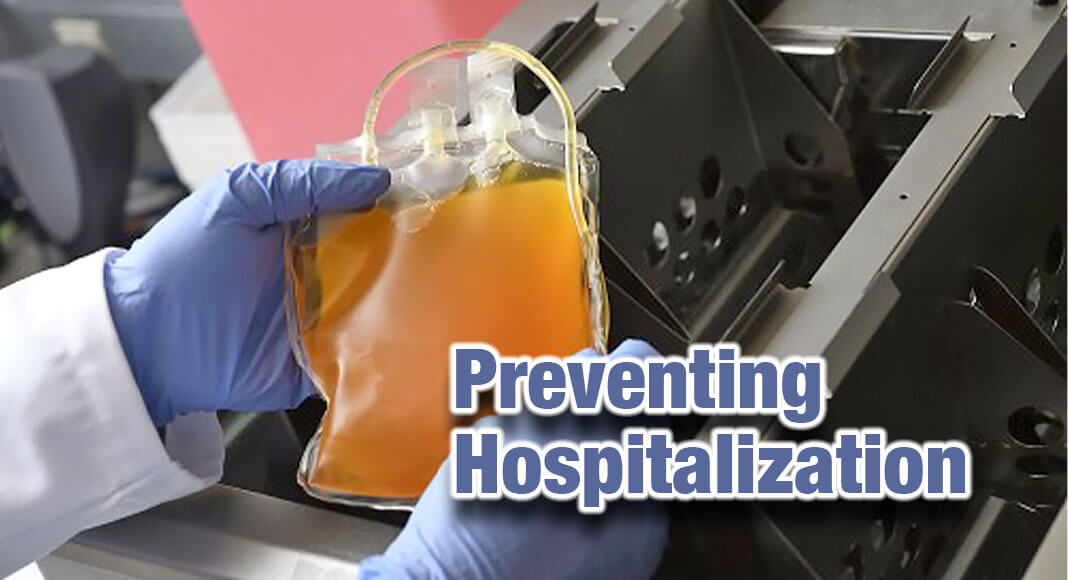
Mega Doctor News
by Johns Hopkins Medicine
Newswise — The results of a nationwide, multicenter clinical trial led by Johns Hopkins Medicine and the Johns Hopkins Bloomberg School of Public Health provides solid evidence for the use of plasma from convalescent patients — those who have recovered from the disease and whose blood contains antibodies against SARS-CoV-2, the virus that causes COVID-19 — as an early treatment. The researchers showed that convalescent plasma reduced the need for hospitalization by half for outpatients with COVID-19 who participated in the study.
The findings are posted today on the preprint website MedRxiv, in which scientists and clinicians have been sharing urgent research related to COVID-19 prior to peer-reviewed journal publication.
“As the changing, often unpredictable landscape of the COVID-19 pandemic demands multiple treatment options — especially in low- and middle-income nations where frontline therapies, such as vaccines and monoclonal antibodies, may not be readily available — our study provides solid evidence that antibody-rich convalescent plasma should be part of the outpatient arsenal,” says study co-lead author David Sullivan, M.D., professor of molecular microbiology and immunology at the Johns Hopkins Bloomberg School of Public Health with a joint appointment in infectious diseases at the Johns Hopkins University School of Medicine.
In the outpatient early treatment study conducted between June 2020 and October 2021, the researchers provided 1,181 randomized patients with one dose each of either polyclonal high-titer convalescent plasma (containing a concentrated mixture of antibodies specific to SARS-CoV-2) or placebo control plasma (with no SARS-CoV-2 antibodies). The patients were 18 and older, and had tested positive for SARS-CoV-2 within eight days prior to transfusion. A successful therapy was defined as a patient not requiring hospitalization within 28 days after plasma transfusion.
The study found that 17 patients out of 592 (2.9%) who received the convalescent plasma required hospitalization within 28 days of their transfusion, while 37 out of 589 (6.3%) who received placebo control plasma did. This translated to a relative risk reduction for hospitalization of 54%.
“With early administration of high-titer SARS-CoV-2 convalescent plasma reducing outpatient hospitalizations by more than 50%, our findings suggest that this is another effective treatment for COVID-19 with the advantages being low cost, wide availability and rapid resilience to the evolving SARS-CoV-2,” says study co-lead author Kelly Gebo, M.D., M.P.H., professor of medicine at the Johns Hopkins University School of Medicine.
“Therefore, we believe that the best role for COVID-19 high-titer convalescent plasma is extending its use to early outpatient treatment when other therapies, such as monoclonal antibodies or drugs, are either not readily available — as in low- and middle-income countries — or ineffective — as with SARS-CoV-2 variants that are resistant to certain monoclonal antibodies,” she says.
Sullivan adds that convalescent plasma is the only antibody therapy that “keeps up with SARS-CoV-2 variants,” including the delta and omicron strains currently spreading around the world, because each patient that recovers from variant COVID-19 produces antibodies that neutralize that specific virus.
Convalescent plasma therapy is currently available in the United States under Food and Drug Administration (FDA) emergency use authorization. Before it can be considered as an early COVID-19 treatment option for outpatients, the FDA must extend the current authorization to include its use in that role.
“We have shared our findings with the FDA, as well as with the World Health Organization,” says Sullivan. “We hope that both organizations will see the value of convalescent plasma for outpatients based on the strength of our study, the largest randomized clinical trial of its kind to date.”
“Eventually, we hope that our data will guide clinicians in how to effectively use high-titer convalescent plasma as an early outpatient treatment, especially regarding timing and dosage,” says Gebo.










